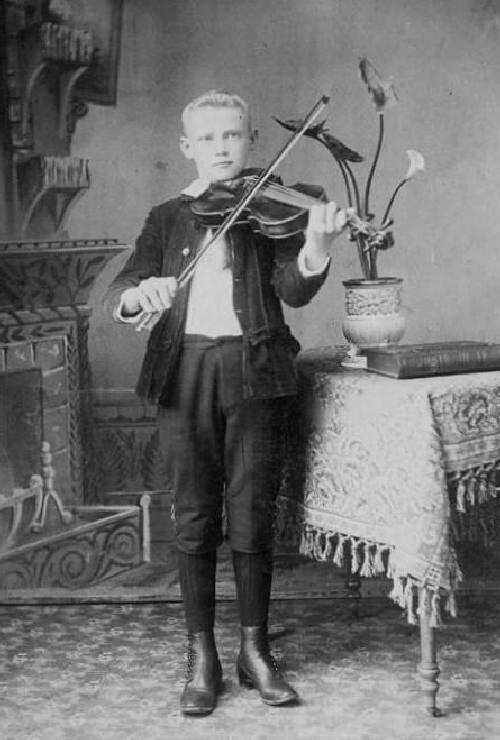
Figure 1.--Here we see a Chicago boy with his violin. We are not sure how to date the portrait. We think it could have been taken in the 1870s, but knee pants were not yet the dominant style for boys. |

|
We note American children playing many different musical instruments. We do not have alot of information on indidual insruments. The one we see the most commonly seems to be the violin. I'm not sure why the violin was so popular, but the photographic record certainly suggests that it was the single most common instrument in the late-19th and early-20th centuries. We think a lot of children also laned the piano, but many families could not affor a piano and of course home practice is critical to learning an instrument. We think the range of instruments became even more varied in the 20th century. I think the saxaphone became much more commn in the 1920s with the popularity of jazz. And in the 1950s the guitar began to becomne very popular.
I have heard that instruments in the mid-1850s were used as props to add a hint of culture, but I think by the lare 19th century they were actual musicians who presumably brought their own instruments. Studios did not have pianos. Thus we do not see studio portraits with pianos, which at any rate would have interfeared with the portrait because of the size.
We note American children playing many different musical instruments. We do not have alot of information on indidual insruments. The one we see the most commonly seems to be the violin. I'm not sure why the violin was so popular, but the photographic record certainly suggests that it was the single most common instrument in the late-19th and early-20th centuries. We think a lot of children also laned the piano, but many families could not afford a piano and of course home practice is critical to learning an instrument. We assume that the music of te day determined the popularity of the violin. These instruments varied in price. For immigrant families, this my hve been a factor. Herewe are not sure. We think the range of instruments became even more varied in the 20th century. I think the saxaphone became much more commn in the 1920s with the popularity of jazz. And in the 1950s the guitar began to becomne very popular.
We are using the photgraphic record as a indicator of popuarity or at least the relative number of the instruments. We are not entirely sure that this is conclusive evidence. For example, what about the children who took piano. They could not very well bring their piano to the studio. A reader writes, "You mention that one sees many more protraits of children holding violins rather than with other instruments. The influx of European immigrants may havebeen a factor affectiving instrumental music in the late-19th ad early 20th centuruies. I am wondering if this was for photographic reasons rather than the popularity of the instrument. It must be much easier to pose a child holding a violin that seated at a piano, with all the furniture moving involved. Wind instruments with the light reflecting of the brass too might have been a problem." We rather agree, about the piano, we are much less sure about brass instruments. There may, however, have been other complications. And there variations over time. As indoor photgraphy became more common, we suspect that the relative appearance of instruments as a valid indicator was much more common.
There were definite gender preferences associated with istrument, but we do not yet fully understand them. A reader writes, "It is true my father played the violin as a boy in the early 1900s. He
was born in 1896, but there were pianos in many ordinary families houses. In my generation growing up in the 30s and 40s, I can recall very few boys playing the violin. It was regarded as a thing for girls.
I was a pianist and at school many of my friends played the piano. I have the advantage of being schooled in both America and United Kingdom and my experience was similar on both sides of the 'pond'."
When our reader says 'ordinary families', I think he must mean cofortable mddle-class families, but I think a lot of the European immigrants learned instruments and these families could not commonly afford pianos. And the gender conventions with immigrants may have been different than for native born Americans. Such cnvetions can lso change over time.
Navigate the Boys' Historical Clothing Web Site:
[Return to theMain American music page]
[Return to theMain American activities page]
[Return to theMain music page]
[Introduction]
[Activities]
[Biographies]
[Chronology]
[Clothing styles]
[Countries]
[Bibliographies]
[Contributions]
[FAQs]
[Glossary]
[Images]
[Links]
[Registration]
[Tools]
[Boys' Clothing Home]
